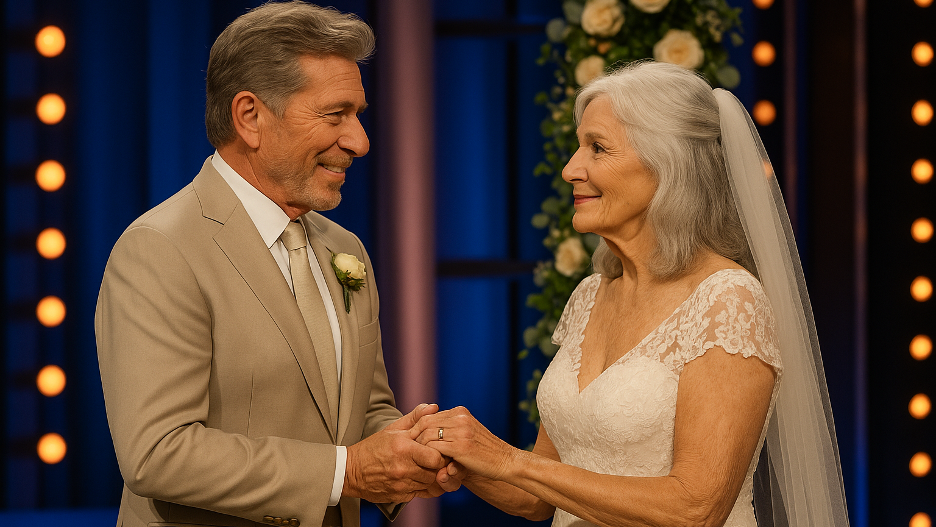
Love after 60: How The Golden Bachelor Became an International Phenomenon

Ask any media professional about the best ideas to attract viewers, and they’ll tell you about fast-paced shows, Gen Z–style videos, and so on. It feels like we sometimes forget that the world is not entirely populated by the younger generation—older people, too, have distinct preferences. In fact, when it comes to the TV industry, this is the generation that grew up watching television, so that must be a significant consideration.
When The Golden Bachelor first aired in the U.S. years ago, very few people thought it might become a global phenomenon. And yet, it did. But what was behind its success across various cultures and societies?
Australia: A Surprise Hit Down Under
We will start this analysis with Australia, but keep in mind that this is not where the famous TV show originated. Regardless, it’s a notable example of how something of quality can travel thousands of miles and find its unique place among already well-known TV productions.
The Australian TV industry is very prolific with a variety of productions, but in a very short period, The Golden Bachelor became one of the most watched new TV shows in Australia. Local fans of reality dating had grown weary of the same old formula; indeed, the 2023 premiere of The Bachelors Australia drew only about 319,000 viewers nationwide – the lowest debut in the franchise’s history. In contrast, news of The Golden Bachelor – a seniors-focused edition – generated enormous buzz.
Even before a domestic version aired, Aussies followed the American series’ success closely. The U.S. Golden Bachelor was credited with “saving the franchise” after it delivered the highest Bachelor ratings in years and pulled in 6.1 million viewers for its finale. Australian networks took note. Channel 9 quickly secured rights for an Australian edition and began casting singles aged 60–75. The enthusiasm makes sense in a country where seniors are a growing audience – as of 2020 about 16% of Australians were 65 or older. By tapping into a demographic often overlooked in dating shows, The Golden Bachelor struck a chord with Australian viewers hungry for something “genuine and real” that reflects social progress.
United States: Reinvigorating a Flagship Franchise

Today, about 16% of Americans are 65+, compared to ~13% a decade earlier.
In the United States – where The Bachelor first rose to popularity – The Golden Bachelor has proven an unprecedented phenomenon. Premiering on ABC in late 2023, it featured Gerry Turner, a 72-year-old retired restaurateur and widower, and a cast of women in their 60s and 70s. The concept immediately delivered Bachelor Nation’s biggest jolt of energy in years. Its debut episode drew 13.9 million viewers across broadcast and streaming, setting a Hulu streaming record for unscripted TV.
Week after week, it dominated its time slot on network TV. Even more impressively, the show didn’t just appeal to older viewers — it scored the franchise’s best rating in the key 18–49 age group since 2021. The two-hour finale drew 6.1 million viewers, more than twice the audience of the most recent Bachelor finale.
In an era when about 16% of Americans are 65+ (compared to ~13% a decade earlier), this fresh take on the dating show felt timely. (Table 1 below highlights the rise in older populations in these countries.) The U.S. success of The Golden Bachelor not only revitalized the American franchise – it also inspired other countries to adapt the format, recognizing a universal appetite for stories of late-life love.
Table 1: Aging Population (65+ as % of total population)
| Country | 2010 | 2020 |
| Australia | 13.5% | 16.3% |
| United States | 12.8% | 16.1% |
| France | 16.8% | 20.7% |
France: Embracing the “Golden” Age of Dating
In Europe, France was among the first to leap on the trend. In mid-2024, French broadcaster M6 revived its long-running Bachelor franchise with a senior twist. The new star, Landry, a 60-year-old widower with three grown children, was introduced as France’s inaugural “Golden Bachelor,” courting 20 women aged 55–67 on primetime TV. This move came after the American series had proven that a show “highlighting those over 50” could be “a huge ratings success,” winning “the hearts of an entire nation” in the U.S..
French audiences, too, were ready to embrace the idea that love and romance don’t stop at retirement. Notably, France’s population skews older than most – by 2020, about 20.7% of French citizens were 65 or above. It’s no surprise, then, that The Golden Bachelor format resonated as a reflection of real demographics.
Early episodes in France struck a sentimental chord by featuring Landry’s poignant backstory (a widower who devoted years to raising kids) which underscored that “life and love do not end with retirement,” as one report observed.
In all three countries, the show tapped into a similar mix of factors: shifting demographics, nostalgia for a gentler style of reality TV where more and more titles become hits, and perhaps a reaction against the shallow drama of earlier dating shows. The result has been a cross-cultural sensation that bridged generational gaps.
Notably, it has prompted major players in Australian entertainment and media abroad to rethink what (and who) makes for compelling television. The pattern is clear: as societies gray, celebrating “love after 60” isn’t just niche programming – it’s striking a deep and optimistic chord worldwide. The Golden Bachelor’s success suggests that no matter the country, viewers find hope and joy in the message that it’s never too late to find love.

